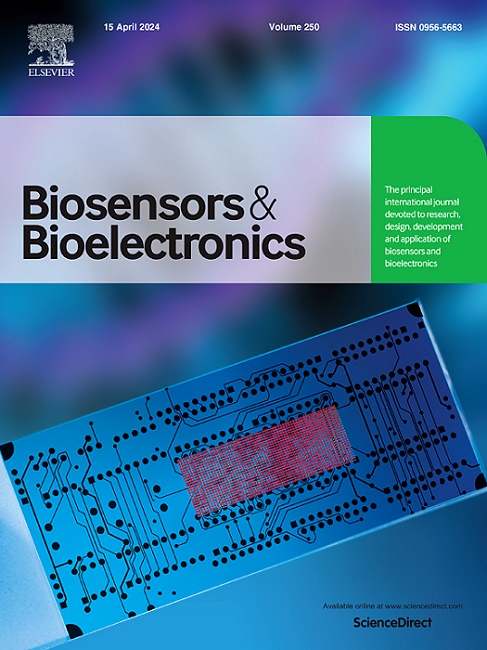Small-molecule fluorescence probes for biomarkers of Alzheimer's disease
IF 10.5
1区 生物学
Q1 BIOPHYSICS
引用次数: 0
Abstract
Alzheimer's disease (AD) is the prevalent neurodegenerative disorder characterized by the accumulation of aberrant proteins that obstruct brain cells and neurons. Early detection of Alzheimer's disease-related biomarkers is very critical for effective treatment of AD. However, the current probes for early clinical diagnosis of AD are invasive and costly, susceptible to interference by biological background fluorescence, and lack sufficient penetration capabilities and challenges associated with imaging in vivo. Therefore, it is very important to develop small-molecular fluorescent probes with biocompatibility, strong penetration ability of the blood-brain barrier (BBB), customizable physical and chemical properties, and real-time non-destructive in situ monitoring. This review provides a comprehensive overview of protein aggregates, reactive oxygen species, metal ions, gas markers, cholinesterase, cysteine, and other recently discovered biomarkers, concentrating on the mechanism of targeted diagnosis and the relationship between probe structure and characteristics. In addition, the review also summaries recent advances in machine learning and artificial intelligence for AD field. Furthermore, the challenges and prospects of small-molecule fluorescent probes for AD diagnosis and clinical application are also summarized. This review aims to provide a foundation for researchers in this field, stimulate innovative molecular design strategies, expedite the clinical evaluation of AD probes, and ultimately achieving accurate early detection of AD.
小分子荧光探针用于阿尔茨海默病的生物标志物
阿尔茨海默病(AD)是一种常见的神经退行性疾病,其特征是异常蛋白的积累阻碍了脑细胞和神经元。早期发现阿尔茨海默病相关生物标志物对于有效治疗AD至关重要。然而,目前用于阿尔茨海默病早期临床诊断的探针具有侵入性,价格昂贵,容易受到生物背景荧光的干扰,缺乏足够的穿透能力,并且存在与体内成像相关的挑战。因此,开发具有生物相容性、穿透血脑屏障(BBB)能力强、理化性质可定制、实时无损原位监测的小分子荧光探针具有十分重要的意义。本文综述了蛋白质聚集体、活性氧、金属离子、气体标志物、胆碱酯酶、半胱氨酸等近年来发现的生物标志物,重点介绍了靶向诊断的机制以及探针结构与特征之间的关系。此外,综述了机器学习和人工智能在AD领域的最新进展。总结了小分子荧光探针在阿尔茨海默病诊断和临床应用中的挑战和前景。本综述旨在为该领域的研究人员提供基础,激发创新的分子设计策略,加快AD探针的临床评估,最终实现AD的准确早期检测。
本文章由计算机程序翻译,如有差异,请以英文原文为准。
求助全文
约1分钟内获得全文
求助全文
来源期刊

Biosensors and Bioelectronics
工程技术-电化学
CiteScore
20.80
自引率
7.10%
发文量
1006
审稿时长
29 days
期刊介绍:
Biosensors & Bioelectronics, along with its open access companion journal Biosensors & Bioelectronics: X, is the leading international publication in the field of biosensors and bioelectronics. It covers research, design, development, and application of biosensors, which are analytical devices incorporating biological materials with physicochemical transducers. These devices, including sensors, DNA chips, electronic noses, and lab-on-a-chip, produce digital signals proportional to specific analytes. Examples include immunosensors and enzyme-based biosensors, applied in various fields such as medicine, environmental monitoring, and food industry. The journal also focuses on molecular and supramolecular structures for enhancing device performance.
 求助内容:
求助内容: 应助结果提醒方式:
应助结果提醒方式:


